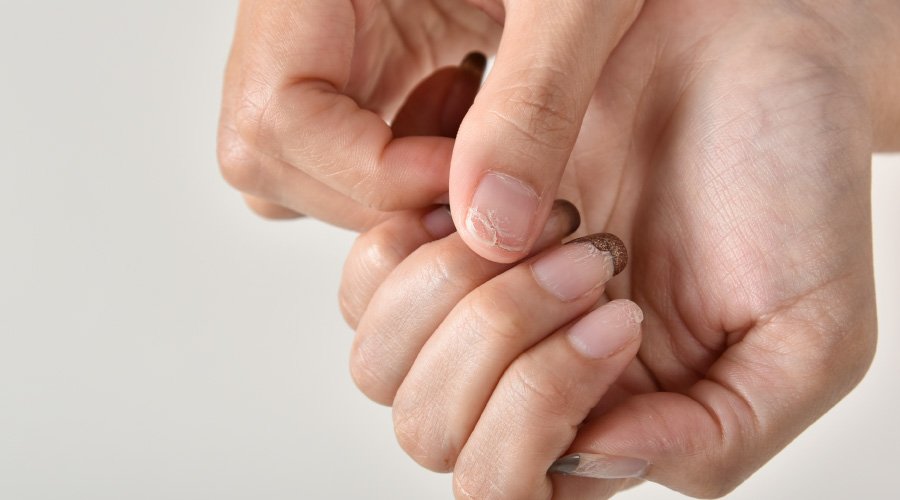Health
Understanding Nail Discoloration: Causes and Treatments
Nail discoloration is a common concern that can affect both fingernails and toenails. The color changes

Nail discoloration is a common concern that can affect both fingernails and toenails. The color changes may range from subtle to severe, and understanding the underlying causes is crucial for proper diagnosis and treatment. This article explores the various reasons behind nail discoloration and offers insights into potential treatments.
Causes of Nail Discoloration:
Fungal Infections:
- Fungal infections, such as onychomycosis, are a leading cause of nail discoloration. These infections are often characterized by yellowing, thickening, and crumbling of the nails.
- Fungi thrive in warm, moist environments, making nails susceptible to infection in areas like locker rooms and swimming pools.
Trauma or Injury:
- Trauma to the nail, such as blunt force trauma or repetitive pressure, can lead to discoloration. This may present as a dark spot or streak under the nail, known as a subungual hematoma.
- Improperly fitting footwear or activities like running or hiking can increase the risk of nail trauma.
Bacterial Infections:
- Bacterial infections, although less common than fungal infections, can also cause nail discoloration. Pseudomonas bacteria, in particular, may produce a greenish-black discoloration.
- These infections often occur in individuals who frequently expose their nails to moisture or who have compromised immune systems.
Chemical Exposure:
- Exposure to harsh chemicals, such as household cleaners, nail polish, or acrylic nails, can stain and discolor the nails over time.
- Proper hand protection and ventilation should be used when handling chemicals to prevent nail damage.
Nutritional Deficiencies:
- Deficiencies in essential vitamins and minerals, including iron, zinc, and B vitamins, can impact nail health and contribute to discoloration.
- A balanced diet rich in nutrients is essential for maintaining healthy nails.
Underlying Health Conditions:
- Various underlying health conditions, such as psoriasis, eczema, thyroid disorders, and liver disease, may manifest as nail discoloration.
- Identifying and treating the underlying condition is essential for addressing nail discoloration effectively.
Medications:
- Certain medications, including antibiotics, antifungals, and chemotherapy drugs, can cause changes in nail color as a side effect.
- Patients should consult their Best Skin Specialist in Islamabad if they notice any unexpected changes in nail color while taking medications.
Treatment Options:
Treatment for nail discoloration depends on the underlying cause. For fungal infections, antifungal medications may be prescribed, while bacterial infections may require antibiotics. Traumatic nail injuries may heal on their own over time, but severe cases may require medical intervention, such as drainage of a subungual hematoma.
Avoiding exposure to chemicals and wearing protective gloves can help prevent further nail damage. Maintaining a balanced diet and addressing nutritional deficiencies can promote overall nail health. In some cases, addressing underlying health conditions or adjusting medications may help resolve nail discoloration.
Conclusion:
Understanding the causes of nail discoloration is essential for effective treatment and prevention. By identifying underlying factors and implementing appropriate interventions, individuals can maintain healthy nails and minimize the risk of discoloration. Consulting a Skin Specialist is recommended for persistent or severe cases of nail discoloration.
Table of Contents
-

 Business5 months ago
Business5 months agoSepatuindonesia.com | Best Online Store in Indonesia
-

 Technology3 weeks ago
Technology3 weeks agoTop High Paying Affiliate Programs
-

 Tech5 months ago
Tech5 months agoAutomating Your Window Treatments: The Advantages of Auto Blinds
-

 Tech5 months ago
Tech5 months agoUnleash Your Potential: How Mecha Headsets Improve Productivity and Focus
-

 Instagram2 years ago
Instagram2 years agoFree Instagram Follower Without Login
-

 Reviews11 months ago
Reviews11 months agoAndroid Laptop vs. Chromebook: Which one is better?
-

 Instagram2 years ago
Instagram2 years agoIGTOK – Get Instagram Followers, Likes & Comments
-

 Business8 months ago
Business8 months agoFollow These 5 Tips To Avail Personal Loans At Lower Interest Rates




















